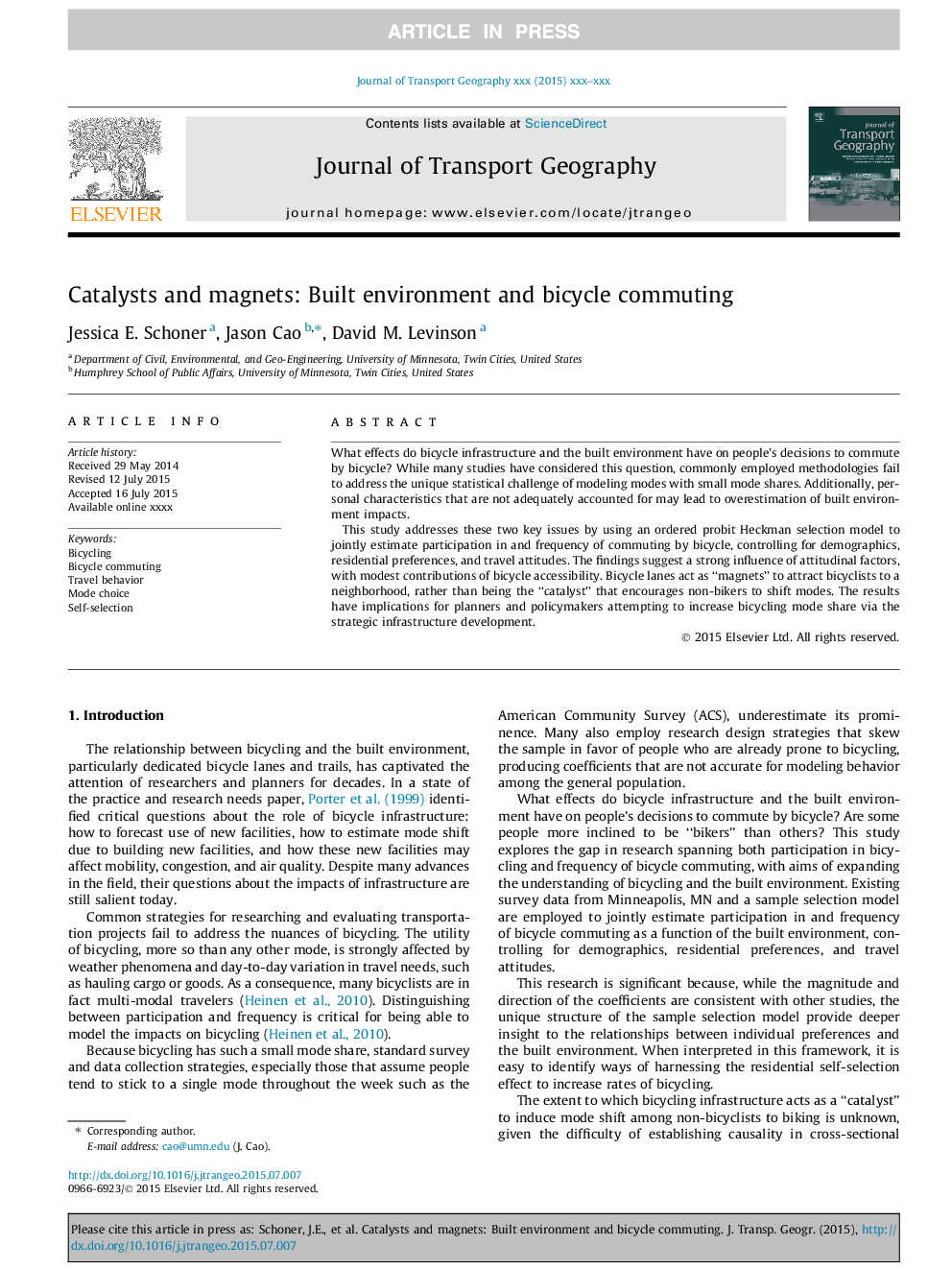| Article ID | Journal | Published Year | Pages | File Type |
|---|---|---|---|---|
| 7485826 | Journal of Transport Geography | 2015 | 9 Pages |
Abstract
This study addresses these two key issues by using an ordered probit Heckman selection model to jointly estimate participation in and frequency of commuting by bicycle, controlling for demographics, residential preferences, and travel attitudes. The findings suggest a strong influence of attitudinal factors, with modest contributions of bicycle accessibility. Bicycle lanes act as “magnets” to attract bicyclists to a neighborhood, rather than being the “catalyst” that encourages non-bikers to shift modes. The results have implications for planners and policymakers attempting to increase bicycling mode share via the strategic infrastructure development.
Related Topics
Life Sciences
Environmental Science
Environmental Science (General)
Authors
Jessica E. Schoner, Jason Cao, David M. Levinson,
